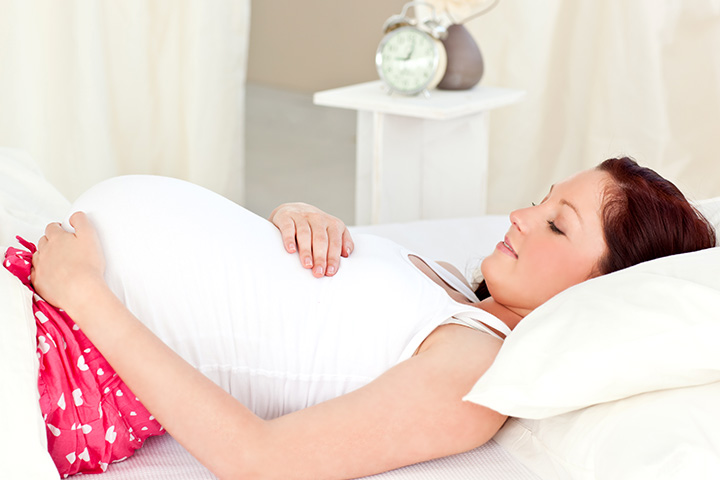Some people say it is best to sleep on your back, while others find being on their sides more comfortable. Everyone has their favorite positions, but the choices are rather limited when you are pregnant. Due to several physical changes taking place in your body, you will find it difficult to sleep in certain positions.
Is It Safe to Sleep on Back During Pregnancy?
No,you should avoid sleeping on back to ensure a healthy pregnancy. Or you may have to deal with several pregnancy complications. While it is okay during your first trimester, sleeping on back can put pressure on the major vein that takes blood from your lower body and delivers it to your heart. In that case, you may feel dizzy and lightheaded when sleeping on your back.
 In addition, sleeping on back during pregnancy may also affect the functioning of the placenta and may interfere with the delivery of nutrients and blood to your growing baby. Other possible complications associatedinclude difficulty breathing, backaches, hemorrhoids, digestive system problems, decreased circulation, and low blood pressure.
In addition, sleeping on back during pregnancy may also affect the functioning of the placenta and may interfere with the delivery of nutrients and blood to your growing baby. Other possible complications associatedinclude difficulty breathing, backaches, hemorrhoids, digestive system problems, decreased circulation, and low blood pressure.
What If You Wake Up on Your Back?
Many symptoms you experience when lying on your back are actually nature's way to tell you that you need to change your position. In rare cases, you may end up cutting off the supply of nutrients and oxygen to the fetus while sleeping on your back. This makes you feel nauseous, which is your body's way to tell you that something is not right. Your baby may also become uncomfortable and start kicking, which will again wake you up so you can change your position. What it means is that you should not panic if you wake up on your back after sleeping on your side. Just make sure you do not make it a habit of sleeping on back during pregnancy.
Which Position Is Best for Sleeping During Pregnancy?
During pregnancy, sleeping on your left side is probably the safest bet. It is safe for your baby and is quite comfortable for you when your abdomen grows. Lying on your left side also improves your blood circulation and provides an easier route for nutrient-packed blood to travel from your heart to the placenta. It also ensures that your expanding body weight does not push hard on your liver.
Here are some other helpful positioning tips to determine the best position for you:
- Prop a pillow between your knees or under your tummy for added back and abdominal support. You can use the pillow you have in your home or buy a special pregnancy pillow. Using a pillow will also help keep you from sleeping on back during pregnancy or rolling to stomach while sleeping.
- Raise your chest by keeping a pillow right under your side to prevent shortness of breath.
- Get books or blocks and place them under your head to keep it elevated. This will help prevent heartburn by keeping stomach acids from moving up your esophagus.
Choose the Best Pillows
- While all sorts of pillows work, you can buy specifically designed pillows for pregnant women. Those soft, squishy pillows can work wonders to keep you safe and comfortable during your pregnancy. Keep one between your knees to help keep your hips aligned and prevent back pain. Hug it to elevate your arms and keep your shoulders and neck aligned.
- There are some complete body-size pillows as well. The complete body-size pillow is a great choice because it is up to six feet in length and provides good support from the head to the feet. You can lie on it, against it, or wind it around yourself. You can even wrap and twist it around your body to relieve any body part that may be causing any discomfort.You can get them in different shapes, including U-shape, C-shape, Wedge-shape, and bean-shape.
- Other pillows provide great support for specific body parts, including the abdomen, neck, and back. Opt for a U-shaped pillow if you need dual support for your abdomen and back. Wedge-shaped pillows are like a triangle and work great for the back or the belly.
